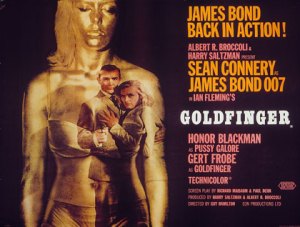Dragons: Riders Of Berk (Part I)
September 9, 2013 Leave a comment
 Following the events of Dragon Island, in which Hiccup (Jay Baruchel) and Toothless saved the residents of Berk from the Red Death, viking and dragon have learnt to live in relative harmony. Unlike his fellow villagers, however, Mildew (Stephen Root) is not too happy to be sharing his island with creatures that frighten his livestock and damage his property, and begins a campaign to disparage Hiccup and have the dragons expelled from Berk once and for all. In the meantime, Alvin The Treacherous (Mark Hamill) plots an attack on Berk in order to capture “The Dragon Conqueror”, something that will be much easier to accomplish if Mildew succeeds.
Following the events of Dragon Island, in which Hiccup (Jay Baruchel) and Toothless saved the residents of Berk from the Red Death, viking and dragon have learnt to live in relative harmony. Unlike his fellow villagers, however, Mildew (Stephen Root) is not too happy to be sharing his island with creatures that frighten his livestock and damage his property, and begins a campaign to disparage Hiccup and have the dragons expelled from Berk once and for all. In the meantime, Alvin The Treacherous (Mark Hamill) plots an attack on Berk in order to capture “The Dragon Conqueror”, something that will be much easier to accomplish if Mildew succeeds.
Not only is How To Train Your Dragon DreamWorks Animation’s best film to date, it’s one of the best animated films ever made. With a four year wait between the first and second movie, Cartoon Network acquired the rights to a weekly animated series aimed at bridging the gap between films. Unlike the series’ based on Madagascar and Kung-fu Panda, Dragons: Riders Of Berk intended to develop the themes established in the first film, which was praised for its relative depth and darkness, and explore the viking world in more detail than a 90 minute movie could ever allow.
Obviously, each medium has its own individual demands, and to begin with these differences are slightly more pronounced than any similarities. The animation is cruder, much of the soundtrack is obviously recycled and many of the original cast members have had to be replaced. Gerard Butler and Craig Ferguson are most missed, with Chris Edgerly and Nolan North struggling with the necessary Scottish accents and drawing undue attention over the first few episodes. Persevere, however, and it becomes clear that the two have more in common than you might have thought — not least the unmistakable tones of Jay Baruchel, America Ferrera and Christopher Mintz-Plasse. Over the course of the series, as you become increasingly immersed in the story, such changes aren’t nearly so jarring.
It’s testament to the quality of How To Train Your Dragon that it can even support a television series, for Chris Sanders and Dean DeBlois — using Cressida Cowell’s source material — have created a world of almost limitless potential. There are a few elements that fail to take off, occasional filler episodes that have the characters herding animals or hosting flying competitions. but for the most part the series manages to build on what has come before, coming into its own with its first two-parter and the introduction of Alvin The Treacherous. Only time will tell how many of these developments feed into future instalments, but Dragons: Riders Of Berk has successfully fleshed out the village of Berk, introduced new creatures and established growing tensions between the villagers and the dragons.
Part I brings together the first eleven episodes of Dragons: Riders Of Berk, in addition to a number of special features including “Dragon Tracker Part I” and “Evolution Of Thunderdrum”. Until How To Train Your Dragon 2 lands in 2014, the series is sufficient substitute for another cinematic outing to Berk, making excellent use of the memorable characters, unforgettable leitmotifs and quickfire sense of humour that made the first film such a resounding success.

















